
Wishbone, oil on canvas, 16×20″, 2013
Briefly describe the work you do.
The paintings I create are visual recordings of how I see the world around me. My paintings are driven by a collection of certain things I feel can influence my work. In my studio I reduce those visuals into paintings with a minimalistic approach. Through this process I am able to bring what is important to the surface so that the viewer can interpret his/her own meaning.
Tell us about your background and how that has had an influence on your work and on you as an artist.
I am a Wisconsin artist, photographer, gallery owner, art educator, advocate, and community leader living and teaching in Sheboygan, Wisconsin. In 2005, I committed my life to expose, educate and engage others on the importance of experiencing and supporting the Visual Arts. Organizing local and regional art exhibitions, community art events, facilitating presentations, and supporting artists through professional development workshops, use of social media and networking has placed me in the forefront of advancing and promoting local artists and attracting regional and national artists to interact, collaborate, network and exhibit in the Sheboygan community.
Engaging in various aspects of the art world has provided me ways to see my art through multiple lenses. When I create a painting what is the intent? Is it to deliver a certain message? Is it a way for me to work out what is happening inside my head? Is it more for my own personal growth? It is my way to distract myself from reality? I believe it is a combination of all. Being exposed to a variety of studio practices and processes provide me the opportunity to reflect on my own practice and try to make sense of what I am doing inside the studio.

Curtain, oil on canvas, 16×20″, 2013
The concept of the artist studio has a broad range of meanings in contemporary practice. Artists may spend much of their time in the actual studio, or they may spend very little time in it. Tell us about your individual studio practice and how it differs from or is the same as traditional notions of “being in the studio.”
When I go to my studio I turn on the turntable, put on some jazz, open the laptop, get my cameras ready, do some organizing, throw a canvas on the wall, do some social media, grab a brush with paint, begin doing an underpainting consisting of random markings, put the brush down, check Instagram, go back to painting, take a few shots with my iPhone, edit, post on social media, continue to organize my studio, go back to painting. Repeat.
You might get the impression that I am a bit A.D.D. Never been diagnosed, but I would say that I am. My practice is driven by what I am thinking at that particular moment. My time in the studio can range from a couple of hours to a full day. Regardless of the outcome I always leave my studio with an idea of where I would like to continue next time I go back. On a brighter note I have decided to take time off from running my gallery to spending more time in the studio. I once wrote, “painting is the only thing that makes me feel alive”. It is easy to forget this when your professional life is being stretched in multiple directions by your own doing.
What roles do you find yourself playing that you may not have envisioned yourself in when you first started making art?
A few years ago I bought a book called, “The Artist’s Guide: How to Make a Living Doing What You Love “ by Jackie Battenfield. I came across an activity where she encourages artists to write their own obituary. It was through this activity that I started to think about what type of legacy I would like to leave behind when I leave this earth. I knew that I wanted to commit my life to the only thing that has been a constant factor in my life and that was ‘art’.
For the past decade, I have committed to advocate for the Visual Arts in Wisconsin and to support artists. About three years ago, my practice as a painter has slowly merged into the art of building art community, which has opened many doors to projects, opportunities, and programs. This has been such a great ride in bringing the local visual arts into the forefront in my community as well as to continue to nurture the visual arts throughout Wisconsin.
When do you find is the best time to make art? Do you set aside a specific time everyday or do you have to work whenever time allows?
The best time to make art is on Sundays. There is something magical about this particular day. It is so quiet.
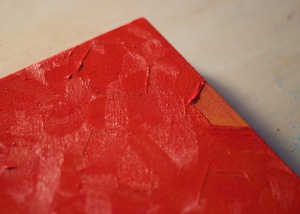
Stack Series No.1, oil on canvas, 12×12″, 2015
How has your work changed in the past five years? How is it the same?
In the past five years I have noticed that my color palette has become more limited, final paintings have now become underpaintings flooded by a solid color, texture has found its way to the surface, the Exacto knife has become another tool for creating, and spray paint has now become another medium. I also have noticed that I am enjoying experimenting more with my work.
How have people such as family, friends, writers, philosophers, other artists or even pop icons had an impact on the work you do?
The 365 Artists 365 Days Project has been part of my life for the past two years. What started as an ambitious project has now became part of who I am today. Publishing our daily artists has impacted how I view art today. Being exposed to the different types of processes, ideas, and media shared across the globe has continued to challenge me to think on how I can continue to move forward with my work. Working with Zina Mussman and Rachel Quirk on this project has been a rewarding experience both personally and professionally. Opening the channels of communication has allowed me to share my thoughts. A big thanks for Mary Dally-Muenzmaier for sharing our project to her audience via her blog, CricketToes and to the Wisconsin Art Education Association for selecting our project to be presented at the 2014 and 2015 annual art conference.
Have you ever been pulled in the direction of a pursuit other than being an artist? What are your other interests?
I am pulled in different directions everyday. Perhaps it is because I have my hands into many fabulous things ranging from owning an art gallery to working on the 365 Artists 365 Days Project, designing artist-inspired lesson plans for the Midwest Artist Studios Project to publishing a quarterly art publication called Artdose Art Guide, teaching secondary art full-time to speaking at conferences, putting together an art e-newsletter called Frank & Co to networking with artists, and facilitating community art-based events to advocating for the Visual Arts and art education in Wisconsin. Regardless of how my time is divided it always comes back to why I decided to commit my life to art.
Other interests that I have is to write to become an author, to continue traveling, studio visits, curating, and to become a resource for visual artists living in and out of Wisconsin.
About

Photo credit: William Zuback
Frank Juarez is the art department chair at Sheboygan North High School. He is actively involved in local, regional, state, and national arts organization such as the Wisconsin Art Education Association, and the National Art Education Association. He has served as a board member in the following organizations: Milwaukee Artist Resource Network, Arts Wisconsin, and the Cedarburg Cultural Center. He is the founder/former director of the Sheboygan Visual Artists. In 2011, he has opened his first art gallery, EFFJAY PROJEKTS Gallery (now called the Frank Juarez Gallery), in Sheboygan. He has been presenting at local universities/colleges on the Business of Art | Art of Business. He founded two projects focused on contemporary art and art education called The Midwest Artist Studios and the 365 Artists 365 Days Project. Recently, he has been recognized as the 2015 Wisconsin Art Education Association Teacher of the Year. In 2016, he will be receiving the Wisconsin Art Educator Award at the National Art Education Association Convention in Chicago, Illinois.

Thelma Sadoff Center for the Arts, Fond du Lac, Wisconsin
frankjuarezpaintings.com
All images copyright of the artist and used with their permission.
 In 2017, Frank Juarez, Zina Mussmann, and Rachel Quirk decided to revisit this project. This time to co-curate it as a juried exhibition and bringing it to Milwaukee, Wisconsin in 2018. This ambitious exhibition features local, national, and international artists from this project featuring works by Christian Arrecis (Illinois), Jill Christian (New Mexico), Nina Ghanbarzadeh (Wisconsin), Samantha Haring (Ohio), Jeanne Heifetz (New York), Colleen Keihm (Illinois), Laurie LeBreton (Illinois), Jennifer Scheuer (Indiana), Emily Swinsick (California), Casey Whittier (Kansas), Connie Wolfe (Illinois), and Ana Perez Ventura (France).
In 2017, Frank Juarez, Zina Mussmann, and Rachel Quirk decided to revisit this project. This time to co-curate it as a juried exhibition and bringing it to Milwaukee, Wisconsin in 2018. This ambitious exhibition features local, national, and international artists from this project featuring works by Christian Arrecis (Illinois), Jill Christian (New Mexico), Nina Ghanbarzadeh (Wisconsin), Samantha Haring (Ohio), Jeanne Heifetz (New York), Colleen Keihm (Illinois), Laurie LeBreton (Illinois), Jennifer Scheuer (Indiana), Emily Swinsick (California), Casey Whittier (Kansas), Connie Wolfe (Illinois), and Ana Perez Ventura (France).







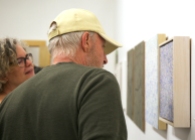














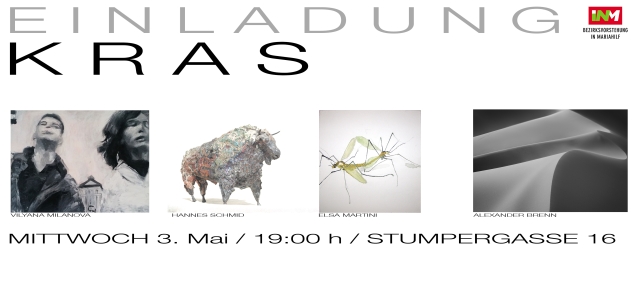








 Zina Mussmann received a BFA from the University of Wisconsin-Milwaukee in 2002 and an MFA from Northern Illinois University in 2008. She has exhibited her work regionally and nationally. Her work has been featured in the Manifest International Painting Annual, The Alchemy Magazine of Literature and Art and Lunch Ticket Magazine. Zina is the co-founder of Greymatter, an artist-run space dedicated to showing conceptually driven and challenging work by local and national artists; and the curator of 365 Artists 365 Days. She is also a faculty member at the Milwaukee Institute of Art and Design where she teaches in the Foundations Department.
Zina Mussmann received a BFA from the University of Wisconsin-Milwaukee in 2002 and an MFA from Northern Illinois University in 2008. She has exhibited her work regionally and nationally. Her work has been featured in the Manifest International Painting Annual, The Alchemy Magazine of Literature and Art and Lunch Ticket Magazine. Zina is the co-founder of Greymatter, an artist-run space dedicated to showing conceptually driven and challenging work by local and national artists; and the curator of 365 Artists 365 Days. She is also a faculty member at the Milwaukee Institute of Art and Design where she teaches in the Foundations Department.

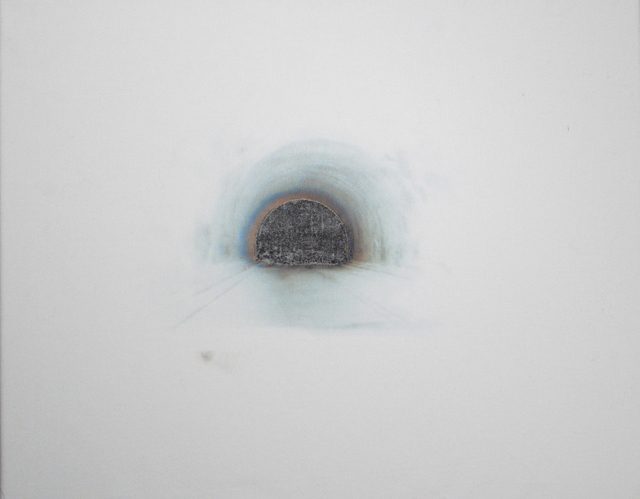

 Rachel Quirk is an artist and co-directs the artist-run space, Greymatter Gallery in Milwaukee, Wisconsin. She received her Bachelors degree in Sculpture from the University of Wisconsin-Milwaukee and her Masters in Fine Arts-Sculpture from Northern Illinois University. She has exhibited nationally and is busy working on a new series.
Rachel Quirk is an artist and co-directs the artist-run space, Greymatter Gallery in Milwaukee, Wisconsin. She received her Bachelors degree in Sculpture from the University of Wisconsin-Milwaukee and her Masters in Fine Arts-Sculpture from Northern Illinois University. She has exhibited nationally and is busy working on a new series.




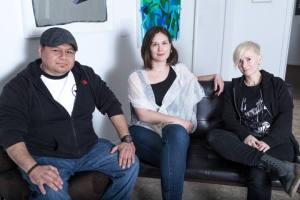

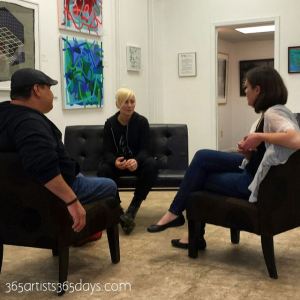



 Different places have different cultures, and human beings will naturally change and adapt to different environments. When people travel, they bring their culture with them. Sometimes the culture that they bring with them changes and adapts to that new environment. In the end, the culture changes to a modified new culture. I always put myself in the situation to make the subject matter more personal to me, so my work gives an intimate and personal account of my own experiences, while simultaneously encouraging the viewer to recall their own. The subject matter that influences and inspires my work the most comes from my own cultural experiences. My work is mixed media and found objects from various locations. I work digitally and traditionally as well as three dimensionally, and like to experiment with different techniques and mediums.
Different places have different cultures, and human beings will naturally change and adapt to different environments. When people travel, they bring their culture with them. Sometimes the culture that they bring with them changes and adapts to that new environment. In the end, the culture changes to a modified new culture. I always put myself in the situation to make the subject matter more personal to me, so my work gives an intimate and personal account of my own experiences, while simultaneously encouraging the viewer to recall their own. The subject matter that influences and inspires my work the most comes from my own cultural experiences. My work is mixed media and found objects from various locations. I work digitally and traditionally as well as three dimensionally, and like to experiment with different techniques and mediums.







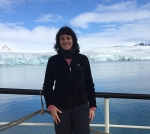 Megan Berner is a visual artist living and working in Reno, Nevada. She earned her MA and MFA in Intermedia from University of Iowa. Megan is currently a lecturer at the University of Nevada Reno where she teaches photography and video classes. Her work is greatly influenced by the landscape of her native Nevada home as well as the vast prairies of the Midwest, being a twin, mapping and exploration, and countless hours of daydreaming. She creates site-specific installations that incorporate video and sound and constructs performative scenes that ultimately exist as photographs. Other forms her artwork takes include artist’s books, collaborative interactions, textile projects, and narrative videos. Megan’s work has been shown nationally and internationally and is represented in both private and public collections in the US and abroad.
Megan Berner is a visual artist living and working in Reno, Nevada. She earned her MA and MFA in Intermedia from University of Iowa. Megan is currently a lecturer at the University of Nevada Reno where she teaches photography and video classes. Her work is greatly influenced by the landscape of her native Nevada home as well as the vast prairies of the Midwest, being a twin, mapping and exploration, and countless hours of daydreaming. She creates site-specific installations that incorporate video and sound and constructs performative scenes that ultimately exist as photographs. Other forms her artwork takes include artist’s books, collaborative interactions, textile projects, and narrative videos. Megan’s work has been shown nationally and internationally and is represented in both private and public collections in the US and abroad.